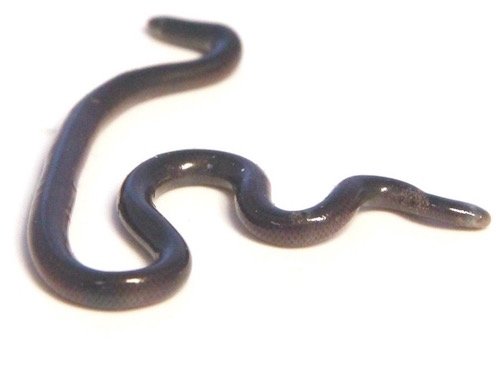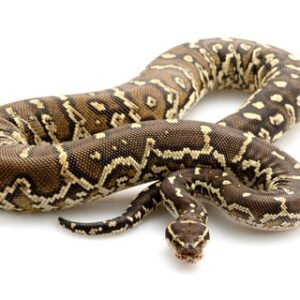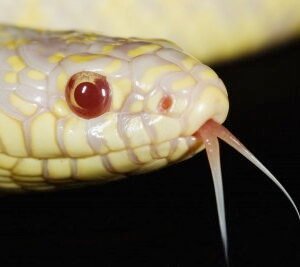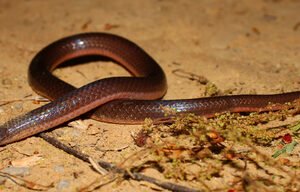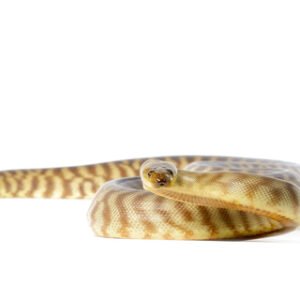Physical Characteristics and Habitat
Blind snakes, members of the infraorder Scolecophidia, exhibit unique physical characteristics that set them apart from other snake species. Typically small in size, many species measure between 20 and 50 centimeters in length, although some can be larger. Their cylindrical bodies are smooth and often shiny, facilitating movement through their natural environments. One of the most striking aspects of blind snakes is their coloration, which varies significantly among species, ranging from earthy tones like browns and grays to more vibrant hues. This pigmentation serves as excellent camouflage, allowing them to blend into the soil and leaf litter of their habitats.
Blind snakes possess several specialized features that distinguish them from other reptiles. Notably, their eyes are reduced to small, often unnoticeable scales, a characteristic that contributes to their name. This adaptation is beneficial for their subterranean lifestyle, where vision is less critical than the sense of touch and smell. Additionally, many species have a pointed snout, which aids in burrowing and navigating through tight spaces. The presence of a forked tongue helps them detect chemical cues in their surroundings, enhancing their foraging abilities in often dark environments.
In terms of habitat, blind snakes are predominantly found in regions that offer ample cover and moisture. They typically inhabit underground burrows, leaf litter, and decaying logs where they can find protection from predators and harsh weather. Their adaptability across various ecological zones ranges from tropical rainforests to arid deserts, showcasing their resilience in fluctuating environments. The roles that blind snakes play in their ecosystems are significant; they contribute to soil aeration and nutrient cycling by feeding on insects and other small invertebrates. Overall, the fascinating physical characteristics and habitat preferences of blind snakes play crucial roles in their survival and ecological contributions.
Behavior, Diet, and Reproduction of Blind Snakes
Blind snakes possess a unique behavior marked by their specialized adaptations for subterranean life. These fascinating creatures primarily inhabit tropical and subtropical regions, allowing them to thrive underground where they seek refuge from predators and harsh environmental conditions. Due to their lack of vision, blind snakes rely on their highly developed sensory organs, particularly their olfactory and tactile senses, to navigate through the soil and locate their food.
The diet of blind snakes mainly consists of small invertebrates, particularly ants and termites. Their foraging habits include burrowing into the nests of these insects, allowing them to access their primary prey effectively. The snakes are adept at hunting in the dark, using their sensitive scales to detect vibrations and movements in the soil, which guides them toward their next meal. This subterranean hunting strategy is crucial for their survival, as it helps them exploit a niche that is less accessible to many other predators.
Reproduction in blind snakes is relatively straightforward, with most species engaging in a form of sexual reproduction. Mating typically occurs during specific seasons when environmental conditions are favorable. The male blind snake will often engage in courtship behaviors that may include scent marking and display of body movements to attract females. After successful copulation, females usually lay a clutch of eggs, which can vary in number depending on the species. Some species may lay as few as two eggs, while others can produce over a dozen in one event.
Adaptation plays a critical role in the survival strategies employed by blind snakes. Their ability to navigate through tunnels and underground habitats not only aids in foraging but also in reproductive success, as it provides a secure environment for their offspring. Overall, the behavior, diet, and reproductive strategies of blind snakes demonstrate their remarkable adaptations that enable them to flourish in their subterranean realms.

